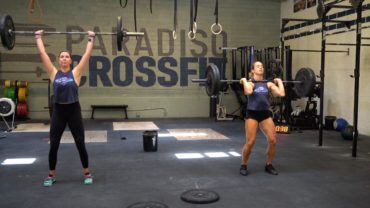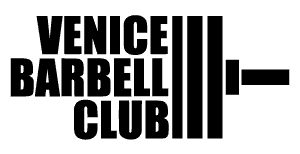Everything is Everything Guide
How to become an athlete and accomplish your Health and Fitness Goals
Our mission is to simplify the massive amount of information on Nutrition, Fitness and Health to get you accomplishing your goals. The primary challenge is that we are all unique individuals with unique goals and lifestyles, so we need a few ideas that we can all relate to. Let’s call these the Golden Rules:
- Body Composition is mostly about Nutrition – Losing excess body fat and developing a lean, athletic physique is an important step in fitness and more than just looking good. If you lose excess body fat and add lean muscle you increase your abilities to perform basic movements like pullups, pushups and running. To accomplish body composition goals, you must focus on your nutrition. Simply put, if you want to lose excess body fat, you must eat and operate at a caloric deficit and if you want to add muscle you must train hard and eat at a caloric surplus with the proper macronutrients. As effective as CrossFit training may be, there is no escaping these laws of nature!
- Sleep and Stress are important factors – Lack of sleep hinders body fat loss and muscle growth and puts your body in a chronic state of stress. Prioritize getting 7-9 hours of sleep if you want to see results from your training and nutrition.
- Quality food choices matter for long term health and fitness – The truth is that you can accomplish short term fitness goals on junk food and supplements if you consume them in the proper quantities. However, these decisions will often result in long term struggles and health issues such as: plateaued performance, chronic inflammation/injuries, digestive issues and reduced immune function. We have developed a Nutrition Quality Control Guide HERE.
Now that we have those big ideas in place, we need to create a short term outcome goal and actions that will help us accomplish that goal. The following steps are about breaking down long term goals into smaller, more manageable parts, taking a look at your current state of health and fitness and establishing realistic changes. We think success is like a snowball. Open your computer notepad or grab a piece of paper and look for the comments in turquoise for where you will need to make notes and let’s get that ball rolling!
Quick Links
- Step 1: Establish your 6 week goal
- Step 2: Determine your nutritional Needs
- Step 3: Log your Current Nutrition
- Step 4: Establish your Behavioral Actions
- Step 5: Making Adjustments to the Plan
Step 1: Establish your 6 week Goal
Don’t overthink this! Write down the first things that come to mind and don’t worry that you don’t know what is possible in 6 weeks. I promise you that a lot is possible if you put your mind to it. Don’t let failure scare you! There is no penalty for going big and missing your goal. Here are a few examples: lose 15lbs of fat, gain 10lbs of muscle, perform 10 pullups, run a sub 6 minute mile, etc.
If you have multiple goals and are struggling to choose one, take a second to imagine achieving each one. The one that stands out in your mind and would make you the happiest should be your goal. Got it? Write that down!
Step 2: Determine your nutritional needs
Now that we have a goal to works towards, the first step will be to establish your caloric needs and macronutrient (protein, carbs, fat) ratios. This will be determined based upon your specific goal from above, activity level, bodyweight and other factors like gender and body type.
PLEASE NOTE: The following nutritional approach will include tracking calories through an online journal, and possibly weighing and measuring your food. We understand that this process is not for everyone and is not a particularly enjoyable way to live life. This is meant to be a short term learning process for making informed decisions and something we encourage everyone to experience at least once. If you are not interested in this process, there is also a non-caloric estimation approach HERE that you may find helpful. Then you can skip down to Step 4 to establish your behavioral actions.
Define your Activity Level:
- Minimal Exercise – little to no exercise
- Moderately Active – 3-4 days per week
- Very Active – 5-7 days per week
Which Chart should you use:
- Fat Loss – reduce bodyweight primarily through fat loss while maintaining muscle
- Maintenance – support performance while maintaining muscle and low body fat
- Mass Gain – Increase muscle mass and strength OR maintain bodyweight and strength during high volume training
Fat Loss Goal Chart
| Bodyweight (lbs) | Minimal Exercise | Moderately Active | Very Active |
|---|---|---|---|
| 90-100 | 900-1200 | 1080-1400 | 1260-1600 |
| 100-110 | 1000-1320 | 1200-1540 | 1400-1760 |
| 110-120 | 1100-1440 | 1320-1680 | 1540-1920 |
| 120-130 | 1200-1560 | 1440-1820 | 1680-2080 |
| 130-140 | 1300-1680 | 1560-1960 | 1820-2240 |
| 140-150 | 1400-1800 | 1680-2100 | 1960-2400 |
| 150-160 | 1500-1920 | 1800-2240 | 2100-2560 |
| 160-170 | 1600-2040 | 1920-2380 | 2240-2720 |
| 170-180 | 1700-2160 | 2040-2520 | 2380-2880 |
| 180-190 | 1800-2280 | 2160-2660 | 2520-3040 |
| 190-200 | 1900-2400 | 2280-2800 | 2660-3200 |
| 200-210 | 2000-2520 | 2400-2940 | 2800-3360 |
| 210-220 | 2100-2640 | 2520-3080 | 2940-3520 |
| 220-230 | 2200-2760 | 2640-3220 | 3080-3680 |
| 230-240 | 2300-2880 | 2760-3360 | 3220-3840 |
| 240-250 | 2400-3000 | 2880-3500 | 3360-4000 |
| 250-260 | 2500-3120 | 3000-3640 | 3500-4160 |
| 260-270 | 2600-3240 | 3120-3780 | 3640-4320 |
| 270-280 | 2700-3360 | 3240-3920 | 3780-4480 |
Maintenance Goal Chart
| Bodyweight (lbs) | Minimal Exercise | Moderately Active | Very Active |
|---|---|---|---|
| 90-100 | 1080-1400 | 1260-1600 | 1440-1800 |
| 100-110 | 1200-1540 | 1400-1760 | 1600-1980 |
| 110-120 | 1320-1680 | 1540-1920 | 1760-2160 |
| 120-130 | 1440-1820 | 1680-2080 | 1920-2340 |
| 130-140 | 1560-1960 | 1820-2240 | 2080-2520 |
| 140-150 | 1680-2100 | 1960-2400 | 2240-2700 |
| 150-160 | 1800-2240 | 2100-2560 | 2400-2880 |
| 160-170 | 1920-2380 | 2240-2720 | 2560-3060 |
| 170-180 | 2040-2520 | 2380-2880 | 2720-3240 |
| 180-190 | 2160-2660 | 2520-3040 | 2880-3420 |
| 190-200 | 2280-2800 | 2660-3200 | 3040-3600 |
| 200-210 | 2400-2940 | 2800-3360 | 3200-3780 |
| 210-220 | 2520-3080 | 2940-3520 | 3360-3960 |
| 220-230 | 2640-3220 | 3080-3680 | 3520-4140 |
| 230-240 | 2760-3360 | 3220-3840 | 3680-4320 |
| 240-250 | 2880-3500 | 3360-4000 | 3840-4500 |
| 250-260 | 3000-3640 | 3500-4160 | 4000-4680 |
| 260-270 | 3120-3780 | 3640-4320 | 4160-4860 |
| 270-280 | 3240-3920 | 3780-4480 | 4320-5040 |
Mass Gain Goal Chart
| Bodyweight (lbs) | Minimal Exercise | Moderately Active | Very Active |
|---|---|---|---|
| 90-100 | 1440-1800 | 1620-2000 | 1800-2200 |
| 100-110 | 1600-1980 | 1800-2200 | 2000-2420 |
| 110-120 | 1760-2160 | 1980-2400 | 2200-2640 |
| 120-130 | 1920-2340 | 2160-2600 | 2400-2860 |
| 130-140 | 2080-2520 | 2340-2800 | 2600-3080 |
| 140-150 | 2240-2700 | 2520-3000 | 2800-3300 |
| 150-160 | 2400-2880 | 2700-3200 | 3000-3520 |
| 160-170 | 2560-3060 | 2880-3400 | 3200-3740 |
| 170-180 | 2720-3240 | 3060-3600 | 3400-3960 |
| 180-190 | 2880-3420 | 3240-3800 | 3600-4180 |
| 190-200 | 3040-3600 | 3420-4000 | 3800-4400 |
| 200-210 | 3200-3780 | 3600-4200 | 4000-4620 |
| 210-220 | 3360-3960 | 3780-4400 | 4200-4840 |
| 220-230 | 3520-4140 | 3960-4600 | 4400-5060 |
| 230-240 | 3680-4320 | 4140-4800 | 4600-5280 |
| 240-250 | 3840-4500 | 4320-5000 | 4800-5500 |
| 250-260 | 4000-4680 | 4500-5200 | 5000-5720 |
| 260-270 | 4160-4860 | 4680-5400 | 5200-5940 |
| 270-280 | 4320-5040 | 4860-5600 | 5400-6160 |
Write down your corresponding calorie range from above.
From these numbers we will create one specific caloric requirement to use as our daily reference point. This is not an exact science and you will be able to adjust this over time, so don’t stress about getting this perfect. We have listed common factors and examples to help you decide what your number should be:
- Adjust your calories based upon your bodyweight in comparison to your 10lb grouping from above.
- Bias your calories higher if you: are male, have an active profession (construction worker, crossfit coach, etc) or do not gain weight easily
- Bias your calories lower if you: are female, do not have an active profession (desk job) or gain weight easily
Example 1: A 160lb male with a Weight Gain Goal that is very active with an active profession that does not gain weight easily may start with a specific caloric need of 3500.
Example 2: A 160lb female with a Weight Loss Goal that is moderately active and an office job that gains weight easily may start with a specific caloric need of 1900.
Example 3: A 160lb female with a Maintenance Goal that does not exercise with an office job that does not gain weight easily may start with a specific caloric need of 2000.
Once you have this number established, write it down as your “Net Calories Consumed.”
IMPORTANT: For those looking to gain or lose weight, this number of calories already includes your caloric deficit or surplus to accomplish your goals. DO NOT deviate greatly from this recommendation or make the mistake of thinking a bigger extreme will get you to your goals faster! If you are not seeing results with this approach, read Step 5: Making Adjustments.
Step 3: Log your current nutrition
My Fitness Pal (MFP) is an online and smartphone app that will track calories and macronutrients. When you login to create your account, it will ask you a few questions and provide a recommendation for calories and macronutrients. Your first step will be to change their recommendations to what we established in the previous step. This can be done through the desktop version at www.myfitnesspal.com or on the smartphone app.
Follow these steps on the desktop version:
- Click “Goals,” scroll down and then click on “Change Goals”
- Select “Custom” and then click “Continue”
- Fill in your “Net Calories Consumed” from above.
- Then plug in your Carbohydrate, Protein and Fat percentages according to your goal and MFP will automatically calculate how much of each you will need to consume daily:
- Weight Loss – Protein 35%, Carb 25%, Fat 40%
- Maintenance – Protein 30%, Carb 40%, Fat 30%
- Mass Gain – Protein 25%, Carb 55%, Fat 20%
- Scroll down and click “Change Goals” (you don’t need to adjust any of the other stuff in there)
Follow these step for the Smartphone app:
- Select the menu icon on the upper left
- Select “Goals”
- Under Nutrition Goals fill in your Calories with your “net calories consumed” from above
- Then plug in your Carbohydrate, Protein and Fat percentages according to your goal and MFP will automatically calculate how much of each you will need to consume daily:
- Weight Loss – Protein 35%, Carb 25%, Fat 40%
- Maintenance – Protein 30%, Carb 40%, Fat 30%
- Mass Gain – Protein 25%, Carb 55%, Fat 20%
- Changes will be saved automatically
Once this is done, you can start logging your food. MFP is known for its database of nutritional information, including common PCF items like Brian’s bowls and SFH protein, but it will also allow you to build recipes and common meals. We recommend logging your food for a week to see the bigger picture and any trends. Think about buying a small digital scale and some measuring devices if you don’t have any experience estimating. Remember that calories are not an exact science, so don’t let this process stress you out.
Step 4: Establish your 6 week Behavioral Actions
This step of determining specific behavioral actions is the most important part of this guide.
After logging your food for a week, you will now have a powerful tool for accomplishing your goal. Using this information, take your time to think critically about what actions you can make over the next 6 weeks. Priority will be to fix any major discrepancies in caloric and macronutrient needs, as well as sleep and stress issues (remember those Golden Rules?). Also, be sure to check out a list of common behaviors that we recommend, including how to handle the infamous “cheat” day. Below we have created an example of how one individual’s goals and actions might evolve over time.
Example 1:
An individual has a 6 week goal to lose 10lbs of excess body fat, they are a beginner athlete in their first 2 months of CrossFit, living a busy lifestyle working 60+hrs a week, they do not have any experience with nutrition or balancing macronutrients and they eat out for the majority of their meals, MFP shows calories are too high with not enough protein or fat and too many carbs. Here are a few actions they could make:
- I will reduce my calories to the recommended levels – This is the number one requirement for losing weight and must be prioritized. Depending upon the athlete’s tolerance for change, they may create more specific action(s) to dictate how this will occur.
- I will only eat fruit and starchy carbs like potatoes, rice and bread in one meal per day – This individual is currently consuming some type of starchy carb and/or fruit in almost every meal, so this will become the primary tool for reducing calories and carb intake to the recommended levels.
- I will get 7 hours of sleep at least 5 days per week – While there are many other actions that can be performed for nutrition, since this individual is averaging 4-5 hours most nights, they have decided to focus on sleep instead. In 6 weeks we will be able to revisit this process and make any changes that are needed.
- I will attend group class at least 3 days per week – More exercise is not always better if it means additional stress on an already busy schedule and sacrificing your other actions. Taking the pressure off to only attend 3 classes per week and focusing on a balanced lifestyle is a great idea for many people.
Example 2:
Fast forward 6 months and the individual from above and has now lost over 20lbs and is pretty happy with their body composition, but would like to lean out and get stronger. They have decided to change their goal from losing weight to a performance goal of improving their snatch by 20lbs. They still work a busy schedule, but have learned to get 4-5 CrossFit classes in per week and have improved their sleep. During their weight loss phase, they learned a lot about portion size but are still working on balancing meals properly, quality and cooking their own food. When recalculating their nutritional needs with lower bodyweight and using the maintenance chart, MFP shows they now need to eat more calories and increase all of their macronutrients. Here are a few actions they could make:
- I will increase my calories to the recommended levels and macronutrient ratios – Just like the weight loss goal, this must be a priority. Since this is not just about eating more, specific actions should be dictated below on how this will occur.
- I will add eggs and butter/avocado to breakfast – During the weight loss phase, breakfast was still a struggle and often times did not include protein. This change is a fast and effective addition to their calories and macronutrient needs. This is also a great start to getting into cooking their own food!
- I will perform Venice Barbell Club training at least 2x per week – This will require some scheduling changes and may include attending VBC on the weekend and/or performing the VBC programming during open gym, but the focused work is a necessity to accomplishing a performance goal.
- I will add extra protein and starchy carbs to my post workout meal – This starts to get into more specific nutrient timing and needs, which we have outlined in our quality control guide and common behavioral actions guide. This typically takes the form of the SFH post workout recovery drink immediately after training and then another meal within the hour that includes a normal amount of protein and starchy carbs like sweet potatoes, white rice, etc.
Example 3:
Fast forward another 3 months and this individual has now accomplished their previous performance goal and are leaner and stronger than they have ever been. They are still working their busy job, have a good handle on portion size and macronutient breakdown, but still want to focus on improving the quality of their food choices to see how it affects their training and performance. Quality nutrition choices is a great step towards improving long term health and fitness, but we still want a specific goal to measure improvement, so they have decided to signup for an upcoming 5k race with the goal of running a sub 20 minute time, which would be more than a 5 minute improvement and a long time goal. Their MFP numbers are slightly higher than they were before based on an increase in activity level. Here are a few actions they could make:
- I will take time on Sunday to prepare much of my food for the week – This is a big step for many people and includes the need to plan not only what you will be cooking, but shopping and taking the time to prepare, clean and store the food. This typically takes the form of crock pot meals, baking veggies in large batches and pre-cooked ground meats and/or roasts.
- I will purchase Brian’s Bowls – Since they still lead a busy life, having these ready at work and home are a great tool for maintaining quality. While this is a great service, they will need to remember to order each week and make this a part of their regular regimen.
- I will perform the 2 track workouts posted every week – Ideally this would mean attending the classes to be coached by Frank, but committing to performing them on their own if necessary. This should include basic running drills that you learn at track class and focusing on form. This training along with regularly attending group classes will help to make huge gains in running time, but will require some scheduling adjustments.
- I will take a daily dose of SFH fish oil – This is recommended for everyone, especially those training at a higher level. They have heard about this from their coaches and seen it in the case, but the idea of taking “Fish” oil sounds gross. They are committed to giving it a try and seeing how it feels. This will require another new process in their daily life, but we promise it is worth the extra effort!
We hope these examples help you visualize this process for achieving long term results. We believe that success is something that builds upon itself, so start small, be realistic and you will achieve amazing things in time. Now it is your turn! Take as much time as you need to write down your behavioral actions.
Step 5: Making adjustments to the plan
The idea is simple: stick to your plan and 6 weeks later, you will have achieved your goal! Depending upon your goal, you may want to continue with your current goal and actions or create a different goal and actions. We don’t expect everyone to be on a strict 6 week plan at every moment of their lives forever, but rather to use this process to create a lasting positive impact on their life.
But what if you are sticking to your plan and you are not seeing any results? What if you are struggling to stick to your planned actions? What if an unexpected change occurs in your life? Don’t worry, these things happen to everyone. It is your ability to deal with these issues that allows for continued long term success. Lets take a look at each of these common issues individually:
Sticking to the plan and not seeing results?
If your goal is body composition change, you should start to see some type of results within the first 2 weeks if you are hitting your recommended calories and macronutrients. If this is not happening, you can adjust your calories by 200-300 in MFP, which will automatically change your macronutrient ratios. Another option is to adjust your exercise volume by an hour or two per week. After making these changes, wait and see if you start hitting your goal and if not, then continue with this process until you start seeing regular results each week. Remember, don’t go off the deep end and think that going into a massive caloric deficit/surplus and training 10x as much will get you to accomplish your goals quicker, in fact, studies show the exact opposite is true!
If your goal is performance based, there are a few factors that might come into play. First, you need to ensure that you are training properly. We often see that people are trying really hard, but missing out on foundational mechanics and strength. Taking the time to speak with a coach and study your movement is essential to long term results. That being said, sometimes you will discover that you need to take a few steps back to address mobility and movement issues. While this may feel like you are going backwards, this is a big step in the right direction for most people and may require some adjustments to their approach to training and action plan. This is not always the case though. Sometimes performance results just take a while to appear. This is especially true with strength training. If you are hitting your nutrition numbers and training your movements regularly with proper mechanics, you must be patient and have faith! You will accomplish your goals!
Struggling to stick to your Behavioral Actions?
Change is hard! Often times we see people get over zealous and excited about accomplishing their goals and create actions that are unrealistic or challenging to implement into their current lifestyle. It is important that we do not view this occurrence as failure, but rather that we need to make adjustments to our plan. One option is to simply remove an action from your list that is the lowest priority for accomplishing your goal. If you do not want to remove any of your actions, then you must take the time to think about how you can change your current lifestyle to accommodate these changes. Remember, slow and steady wins the race!
Unexpected Life Change?
The two most common occurrences in this category are injury and work related issues. This is part of life and does not mean that you need to abandon your Health and Fitness. For some, this may mean starting over with a whole new plan, while for others, their goal may continue to be realistic and just have to create changes to their actions. There are two big takeaways we want you to understand:
Nutrition is the foundation of Health and Fitness – If life gets in the way of training, do not give up on your nutrition. You may have to adjust your numbers to accommodate a change in activity level, but know that you will return to training at some point. This is especially true for those athletes that are looking to lose excess body fat. If you are smart , you can continue to lose weight and return to the gym lighter and leaner than before. You can use this as an opportunity to focus on more than just hitting your calorie and macronutrient numbers for performance, but work on other aspects of nutrition like making quality food choices and cooking your own food.
Injuries are inevitable – If you live an active lifestyle, you run the risk of injury….heck, even if you don’t live an active lifestyle accidents happen! We must be prepared mentally for this inevitability and must continue training if possible. What happens most commonly is that an athlete will have an injury to something like a finger, elbow, wrist, shoulder, knee or ankle and they will be limited in group class participation and decide to put their membership on hold. Oftentimes this is at the recommendation of a doctor. What happens is that people don’t just take a break from our gym, they take a break from exercise all together, sometimes for something as small as a finger injury! We whole-heartedly disagree with this idea and recommend the exact opposite. Even if you cannot perform the group class workout of the day, you have so much more of your body that is functioning properly that you can train. The increased blood flow and hormonal release that occurs during exercise will also help you heal faster. Train smart, so that when you heal, you can continue where you left off!















